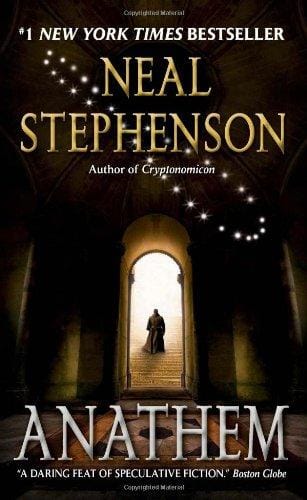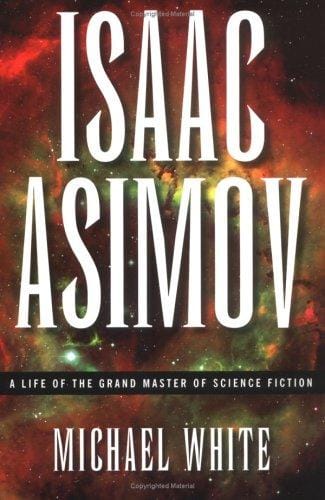Exploring Neal Stephenson's Anathem: Themes, World-Building & Relevance
An 800-word exploration of Neal Stephenson’s sci-fi epic Anathem, examining its world-building, themes, characters, and modern relevance.

Introduction to Anathem
First published in 2008, Neal Stephenson’s science fiction novel "Anathem" quickly earned a reputation for intellectual ambition, labyrinthine plotting, and deep philosophical inquiry. Set on the planet Arbre, it follows members of monastic-style communities known as maths who dedicate their lives to pure thought while the secular "saecular" world bustles outside their walls. Blending speculative cosmology, linguistic innovation, and adventure, "Anathem" challenges readers to contemplate the nature of reality, consciousness, and human progress. This article unpacks the book’s setting, themes, characters, and enduring cultural relevance.
Setting and World-Building
Stephenson’s meticulous world-building is on full display in "Anathem." Arbre resembles Earth in climate and biodiversity, yet its history diverged drastically after a catastrophic technological collapse. In response, scholars retreated into fortress-like "concents" where they pursue knowledge for set intervals of one, ten, hundred, or thousand years, emerging only for ceremonial exchanges called apert celebrations. This cyclical isolation creates an ecosystem in which ideas evolve free from political or commercial pressures, an environment the author uses to study how societies generate and safeguard knowledge.
Arbre and the Mathic World
The mathic world acts as both a literal and symbolic structure. Behind concent walls, monks and nuns—called avout—use rigorous logic, geometry, and cosmology to explore truths rarely questioned in the outside world. Their austere lifestyle contrasts dramatically with the consumerist saecular culture, spotlighting tensions between contemplation and instant gratification. As protagonist Erasmus "Raz" Ascended learns, the concent is not merely a place of retreat; it is a crucible that shapes thinkers capable of confronting universe-altering dilemmas.
Core Themes
Philosophy and Consciousness
At its core, "Anathem" interrogates consciousness and the mechanisms by which humans acquire knowledge. Through dialogues—many modeled after Socratic or Platonic exchanges—characters debate whether mind is emergent or fundamental. The novel proposes that disciplined reasoning can tune the brain to frequencies of a higher cosmic order, allowing select individuals to perceive deeper strata of reality. These meticulously crafted conversations invite readers to question the reliability of perception and the possibility of transcendent awareness.
Platonic Realism vs. Empiricism
Stephenson dramatizes the ancient rivalry between Platonic realism, which posits the existence of perfect abstract forms, and empiricism, which relies on sensory evidence. In Arbre’s lore, these positions manifest as the Halikaarnians and Procians, intellectual factions that have repeatedly clashed throughout history. The novel situates Raz and his companions at the intersection of these schools, forcing them to weigh mathematical ideals against experiential data when facing a looming extraterrestrial threat. The resulting discourse serves as an allegory for modern debates surrounding theoretical physics and applied technology.
Multiverse and Quantum Possibilities
Another riveting theme is the multiverse hypothesis. "Anathem" introduces the concept of synclastic and diachronic cosmoi—alternate realities that sometimes intersect. Stephenson integrates quantum decoherence, many-worlds interpretation, and string-theory speculation into the narrative without sacrificing character depth. The plot hinges on whether Arbre’s scholars can communicate across cosmological boundaries to avert catastrophe. By weaving cutting-edge physics into a compelling quest, the novel suggests that imaginative thought is not merely academic but essential to survival.
Characters that Drive the Narrative
Although propelled by ideas, "Anathem" thrives on its dynamic cast. Raz, the lively yet introspective narrator, provides an accessible lens through which readers encounter dense philosophical material. His mentor Orolo embodies intellectual courage, defying concent rules to study a clandestine orbiting object. Jel, Arsibalt, and Fraa Lio amplify the group’s emotional stakes, offering humor and dissent that humanize theoretical debates. Meanwhile, secular figures like Cord and Ennis reveal how mainstream society both distrusts and depends on mathic expertise. Together, these characters dramatize the personal costs and rewards of pursuing truth.
Language and Invented Lexicon
Stephenson’s invented vocabulary—words such as "praxis," "inbrication," and "jeejah"—initially appears daunting, but it serves a strategic function. By estranging familiar concepts, the author compels readers to slow down and question assumptions, mirroring the avout’s meditative cognition. The glossary and marginal notes echo medieval scholastic manuscripts, reinforcing the monastic ambiance while supplying humor and meta-commentary. This linguistic architecture elevates "Anathem" from mere story to fully realized cultural artifact.
Why Anathem Still Matters Today
Fifteen years after publication, "Anathem" remains startlingly relevant. In an era of information overload and algorithmic echo chambers, its depiction of deliberate, long-term scholarship feels prescient. The concent model proposes an antidote to knee-jerk opinion cycles, advocating for spaces where ideas can mature in seclusion before re-entering public discourse. Additionally, the novel’s exploration of multiverse theory resonates with current breakthroughs in quantum computing and astrophysics, underscoring the value of speculative fiction as a sandbox for emerging science.
Final Thoughts
"Anathem" is not a light read, but its complexity is precisely what makes it rewarding. Stephenson merges grand adventure with dense philosophical inquiry, inviting readers to participate in a thought experiment that transcends genre boundaries. Whether you are drawn by the allure of parallel universes, the rigors of logic, or simply a well-told tale, diving into Arbre’s concent walls promises intellectual excitement that lingers long after the final page. For those willing to engage, "Anathem" offers a blueprint for thinking deeply in a distracted world.



